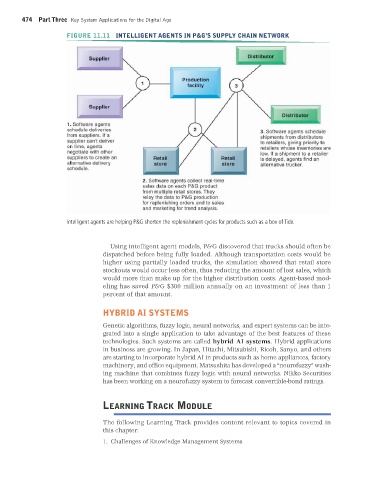Page 475 -
P. 475
474 Part Three Key System Applications for the Digital Age
FIGURE 11.11 INTELLIGENT AGENTS IN P&G’S SUPPLY CHAIN NETWORK
Intelligent agents are helping P&G shorten the replenishment cycles for products such as a box of Tide.
Using intelligent agent models, P&G discovered that trucks should often be
dispatched before being fully loaded. Although transportation costs would be
higher using partially loaded trucks, the simulation showed that retail store
stockouts would occur less often, thus reducing the amount of lost sales, which
would more than make up for the higher distribution costs. Agent-based mod-
eling has saved P&G $300 million annually on an investment of less than 1
percent of that amount.
HYBRID AI SYSTEMS
Genetic algorithms, fuzzy logic, neural networks, and expert systems can be inte-
grated into a single application to take advantage of the best features of these
technologies. Such systems are called hybrid AI systems. Hybrid applications
in business are growing. In Japan, Hitachi, Mitsubishi, Ricoh, Sanyo, and others
are starting to incorporate hybrid AI in products such as home appliances, factory
machinery, and office equipment. Matsushita has developed a “neurofuzzy” wash-
ing machine that combines fuzzy logic with neural networks. Nikko Securities
has been working on a neurofuzzy system to forecast convertible-bond ratings.
LEARNING TRACK MODULE
The following Learning Track provides content relevant to topics covered in
this chapter:
1. Challenges of Knowledge Management Systems
MIS_13_Ch_11 Global.indd 474 1/17/2013 2:30:07 PM

